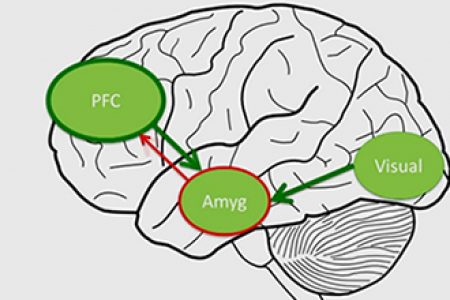The Aha Moment
According to research by the Brain and Development Lab in Leiden, adolescents are better at finding creative solutions than adults. How can we explain that adolescents reach the so called 'aha moment' so quickly? Let's have a look into their brains!
Give a fifteen-year-old an iPad, smartphone, or some other device, and you can bet he or she will have it all worked out much more quickly than most adults. No matter how carefully we adults read the manual and methodically follow all the steps – and no matter that we can draw on a wealth of experience with similar types of devices in the past – we still can’t compete with adolescents here. And yet it can be so difficult to get them interested in watching news programmes or doing their homework.
What is it that makes adolescents so good at this kind of thing? At the Brain and Development Lab in Leiden we’ve been doing research into what is sometimes known as ‘aha insight’, an important component of creativity.
A creative thought is one that leads to a new insight that hasn’t been thought of before. It does have to be useful and practical, though, not just some crazy idea; some sort of out-of-the-box thinking leads to an aha insight that can actually be used. To investigate this aha moment, we got adolescents and adults to carry out tasks involving moving matchsticks to make new figures. On average, adolescents identified the right solution more quickly than adults; they were quicker to reach the aha moment.
We then investigated which areas of the brain were active at this point when people experienced the aha moment. The frontal cortex turned out to play a key role here. The number of neurons in the frontal cortex increases from birth and peaks in adolescence, after which the effective neurons remain in place and the superfluous ones are removed. This process enables the frontal cortex to work more and more efficiently. Think of it as a forest where there aren’t any clear paths, so you can criss-cross your way through as you wish. But as the forest gets older and more walkers pass that way, certain paths become well-trodden and established, whereas others are taken less often and eventually disappear.
Adults use the frontal cortex like a multi-lane motorway for targeted problem-solving. One of the reasons adolescents have such trouble planning is because the frontal cortex is still developing; it’s still a winding path through the forest. But when it comes to the aha moment, adolescents still have easy access to side-roads, so they are more inclined to leave the beaten track. They use the frontal cortex more in finding creative solutions than adults do. The more activity was measured in the side-roads of the frontal cortex, the better the adolescents performed in the task. So it seems as though the large quantity of neurons enables adolescents to find their way along winding paths that no longer readily suggest themselves to adults.
So is it better to have a multi-lane frontal cortex or to have winding paths? Ninety percent of the time it’s an advantage to be able to understand and follow a set of instructions and to concentrate on carrying out a task; it’s helpful to have a brain that gets you from A to B quickly and directly. So on the whole it’s a good thing that we get better at this as adults. But in a few cases, maybe just about 10% of the time, it’s better to come up with a solution by thinking out of the box, or just by giving something a try without having a specific solution in mind. These creative insights are at their height in adolescence and decrease as we become adults. There are many gains to becoming an adult, but you do lose some things along the way.
These research studies show that young people’s brains are particularly well equipped for thinking up creative solutions to everyday problems. And adolescents definitely do have their advantages here – because they understand new technologies quickly, for instance, or because they may come up with solutions for societal problems that adults are slower to see. Adolescence is a time when young people have to detach themselves from their parents and adapt quickly to new situations, such as moving to a new school or building up a group of friends. Their brains are equipped for these challenges, which makes this a unique period for personal development. Parents who worry about how their teenagers are ever going to plan for the future should perhaps just remember that those motorways will come…
This short essay is part of the online exhibition 'The Netherlands in Ideas', in which 93 scientists, entrepreneurs, and artists answer a question by author and columnist Paulien Cornelisse: 'What insight from your area of expertise can help others in their daily lives?’ The exhibition is spread over 93 websites. This blog gives Eveline Crone’s answer to the question. For further reading (in Dutch), you can go on to the next answer of Theo Doreleijers, or visit the ‘central hall’ of the exhibition.
The collection of all the answers is also available as a book (in Dutch): 'Dit wil je weten: Wetenschappers ondernemers en kunstenaars geven adviezen voor het dagelijks leven' [What you want to know. Scientists, entrepreneurs, and artists give us their tips for daily life. For more information, see Mavenpublishing - Dit wil je weten.





